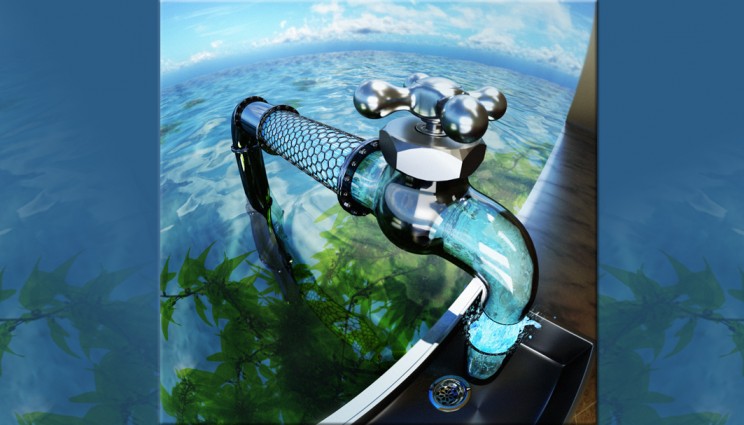It seems that Canadian nuclear energy company General Fusion has finally moved from Burnaby to Richmond (both are part of the Metro Vancouver Region). The move first announced in 2021 (see my November 3, 2021 posting for the news and a description of fusion energy; Note: fission is a different form of nuclear energy, fusion is considered clean/green).
I found confirmation of the move in an August 9, 2023 article by Kenneth Chan for the dailyhive.com
If all goes as planned, a major hurdle in fusion-based, zero-emission clean energy innovation could be produced on Sea Island in Richmond in just three years from now.
BC-based General Fusion announced today it has plans to build a new magnetized target fusion (MTF) machine at the company’s global headquarters at 6020-6082 Russ Baker Way [emphasis mine] near the South Terminal of Vancouver International Airport (YVR). [Note: YVR is located in Richmond, BC]
…
Chan goes on to note (from his August 9, 2023 article), Note: A link has been removed,
This machine will be designed to achieve fusion conditions of over 100,000,000°C by 2025, with “scientific breakeven” conditions by 2026. This will “fast-track” the company’s technical progress.
More specifically, this further proof-of-concept will show General Fusion’s ability to “symmetrically compress magnetized plasmas in a repeatable manner and achieve fusion conditions at scale.”
General Fusion’s technology is designed to be lower cost by avoiding other approaches that require expensive superconducting magnets or high-powered lasers.
…
The YVR machine is intended to support further work and investment and reduce the risk of General Fusion’s commercial-scale demonstration test plan in Culham Campus of the United Kingdom Atomic Energy Authority (UKAEA) — located just outside of Oxford, west of London. The UK plant has effectively been delayed, [emphasis mine] with the goal now to provide electricity to the grid with commercial fusion energy by the early to mid-2030s.
“Our updated three-year Fusion Demonstration Program puts us on the best path forward to commercialize our technology by the 2030s,” said Greg Twinney, CEO of General Fusion, in a statement. “We’re harnessing our team’s existing strengths right here in Canada and delivering high-value, industry-leading technical milestones in the near term.”
…
Canada, always a colony
I wonder what happened to the UKAEA deal. In my October 28, 2022 posting (Overview of fusion energy scene) General Fusion was downright effusive in its enthusiasm about the joint path to commercialization with a demonstration machine to be built in the UK. Scroll down to my ‘Fusion energy explanation (2)’ subhead for more details.
It now looks as if the first demonstration will be build and tested in Canada, from an August 9, 2023 General Fusion news release,
General Fusion announced a new Magnetized Target Fusion (MTF) machine that will fast-track the company’s technical progress. To be built at the company’s new Richmond headquarters, this ground-breaking machine is designed to achieve fusion conditions of over 100 million degrees Celsius by 2025, [emphasis mine] and progress toward scientific breakeven by 2026. In addition, the company completed the first close of its Series F raise for a combined $25 million USD (approximately $33.5 million CAD) of funding. The round was anchored by existing investors, BDC Capital and GIC. It also included new grant funding from the Government of British Columbia, which builds upon the Canadian government’s ongoing support through the Strategic Innovation Fund (SIF).
This machine represents a significant new pillar to accelerate and de-risk [emphasis mine] General Fusion’s Demonstration Program, designed to leverage the company’s recent technological advancements and provide electricity to the grid with commercial fusion energy by the early to mid-2030s.
…
Over the next two to three years, General Fusion will work closely with the UK Atomic Energy Authority [UKAEA] to validate the data gathered from [Lawson Machine 26] LM26 and incorporate it into the design of the company’s planned commercial scale demonstration in the UK.
…
So, the machine is being ‘de-risked’ in Canada first, eh?
September 2023
There was an interesting UK addition to General Fusion’s board of directors according to a September 6, 2023 news release,
Today [September 6, 2023], General Fusion announced the appointment of Norman Harrison to its Board of Directors. Norman is a world-class executive in the energy sector, with 40 years of unique experience providing leadership to both the fusion energy and nuclear fission communities.
His experience includes serving as the CEO of the UK Atomic Energy Authority (UKAEA) from 2006 to 2010 [emphasis mine], when he oversaw the groundbreaking research being conducted by the Joint European Torus (JET), the world’s largest fusion experiment and the only one operating using deuterium-tritium fuel, as it pushed the frontiers of fusion science. Norman’s expertise will support General Fusion as the company completes its Magnetized Target Fusion (MTF) demonstration, LM26 [scroll up to August 9, 2023 news release in the above for details] , at its Canadian headquarters. LM26 is targeting fusion conditions of 100 million degrees Celsius by 2025 and is charting a path to scientific breakeven equivalent by 2026. The results achieved by LM26 will be validated by the UKAEA and incorporated into the design of the company’s near-commercial machine, which is planned to be built at the UKAEA’s Culham Campus.
Norman’s background also includes leading the construction and operations of large-scale power plants. As a result, his guidance will benefit General Fusion as it progresses to commercializing its MTF technology by the early to mid-2030s.
“I’ve been a part of the fusion energy industry for many years now. General Fusion’s unique technology stands out and has exciting promise to put fusion energy onto the electricity grid,” said Norman Harrison. “I am thrilled to join the General Fusion team and be a part of the company’s progress.”
“Norman’s wealth of expertise in advancing fusion technology and operating large electricity infrastructure provides us with meaningful insight into what is required to effectively bring Magnetized Target Fusion to the energy grid in a cost-effective, practical way,” said Greg Twinney, CEO, General Fusion. “We look forward to working with him as General Fusion transforms the commercial power industry with reliable fusion power.”
About General Fusion
General Fusion is pursuing a fast and practical approach to commercial fusion energy and is headquartered in Richmond, B.C. The company was established in 2002 and is funded by a global syndicate of leading energy venture capital firms, industry leaders and technology pioneers. …
So, after postponing plans to build a build a demonstration plant with UKAEA and deciding to build it in Canada where it can be ‘de-risked’ here first, General Fusion adds a former UKAEA CEO to their company board. This seems a little strategic to me.
October 2023
Here’s the latest from an October 10, 2023 news release,
Today [October 11, 2023], General Fusion and Kyoto Fusioneering announced a Memorandum of Understanding (MOU) to accelerate the commercialization of General Fusion’s proprietary Magnetized Target Fusion (MTF) technology, aiming for grid integration in the early to mid-2030s. The companies will collaborate to advance critical systems for MTF commercialization, including the tritium fuel cycle, liquid metal balance of plant, and power conversion cycle.
Tritium, a hydrogen isotope and key fusion fuel, does not occur naturally and must be produced or “bred” in the fusion process. General Fusion’s game-changing commercial power plant design features a proprietary liquid metal wall that compresses plasma to fusion conditions, protects the fusion machine’s vessel components, and breeds tritium upon interacting with the fusion products. This design allows the machine to be self-sustaining, generating fuel for the life of the power plant while facilitating efficient energy extraction from the fusion reaction through a liquid metal loop to a heat exchanger.
Kyoto Fusioneering specializes in fusion power plant systems that complement the plasma confinement core, are applicable to various fusion confinement concepts, such as MTF, and are on the critical path for fusion commercialization. The complementary capabilities of both organizations will enable parallel development of key systems supporting MTF commercialization. Initial collaboration under this MOU will focus on liquid metal experimentation and fuel cycle system development at both the General Fusion and Kyoto Fusioneering facilities, such as establishment of balance of plant and power conversion test facilities, liquid metal loops, and vacuum systems.
Quotes:
“Currently, our new machine, LM26, is on-track to achieve fusion conditions by 2025, and progress towards scientific breakeven by 2026,” said Greg Twinney, CEO, General Fusion. “Harnessing the unique technological and engineering expertise of Kyoto Fusioneering will be instrumental as we translate LM26’s groundbreaking results into the world’s first Magnetized Target Fusion power plant.”
“We’re thrilled to join forces with General Fusion. Our combined expertise will accelerate the path to commercial fusion energy, a critical step toward a sustainable, decarbonized future,” said Satoshi Konishi, Co-founder and Chief Fusioneer, Kyoto Fusioneering.
Quick Facts:
Magnetized Target Fusion [prepare yourself for 1 min. 21 secs. of an enthusiastic Michel Laberge, company founder and chief science officer] uniquely sidesteps challenges to commercialization that other technologies face. The proprietary liquid metal liner in the commercial fusion machine is mechanically compressed by high-powered pistons. This enables fusion conditions to be created in short pulses rather than creating a sustained reaction. General Fusion’s design does not require large superconducting magnets or an expensive array of lasers.
General Fusion’s design will use deuterium-tritium fuel for its commercial power plant. Both are isotopes of hydrogen. Deuterium occurs naturally and can be derived from seawater. Tritium needs to be produced, which is why General Fusion’s unique and proprietary technology that breeds tritium as a byproduct of the fusion reaction is a game-changer.
Kyoto Fusioneering was spun out of Kyoto University. It is home to world-class R&D facilities, and its team has a combined total of approximately 800 years of experience [emphasis mine].
…
About Kyoto Fusioneering
Kyoto Fusioneering, established in 2019 [emphasis mine], is a privately funded technology startup with facilities in Tokyo and Kyoto (Japan), Reading (UK), and Seattle (USA). The company specialises in developing advanced technologies for commercial fusion power plants, such as gyrotron systems, tritium fuel cycle technologies, and breeding blankets for tritium production and power generation. Working collaboratively with public and private fusion developers around the world, Kyoto Fusioneering’s mission is to make fusion energy the ultimate sustainable solution for humanity’s energy needs.
800 years of experience seems to be a bit of a stretch for a company established four years ago with 96 employees as of July 1, 2023 (see Kyoto Fusioneering’s Company Profile webpage) but hat’s off for the sheer gutsiness of it.


